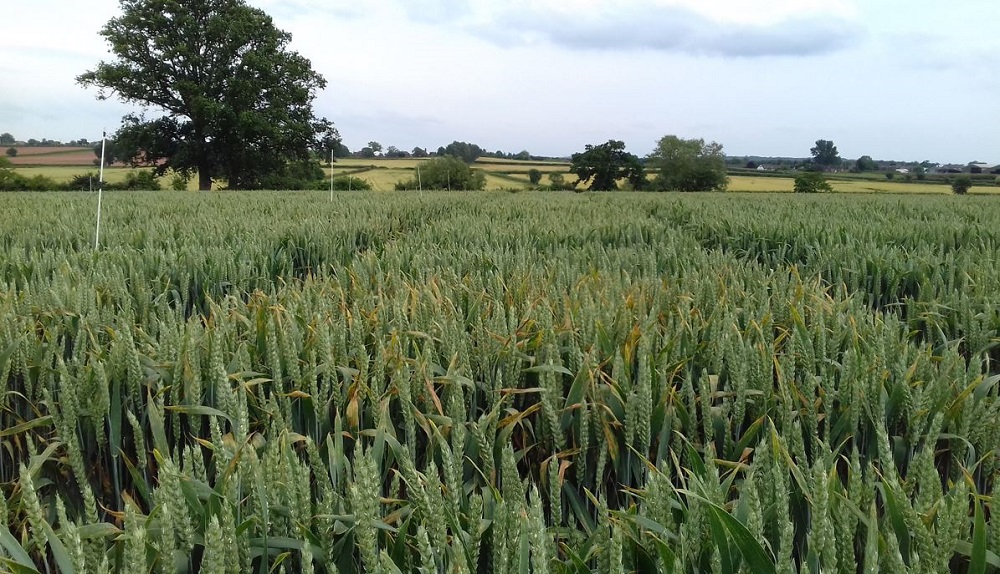- Home
- Knowledge library
- Fungicide performance in wheat, barley and oilseed rape (2015–18)
Fungicide performance in wheat, barley and oilseed rape (2015–18)
Summary
Across the four harvest seasons (2015–18), the efficacy of fungicides was tested against the main pathogens of wheat, barley and oilseed rape. The diseases targeted were those with the highest incidence and/or greatest potential economic impact for growers.
The fungicides included new active substances, new mixtures of existing chemistry and treatments established as current commercial standards. A wide range of modes of action were trialled, including azoles, succinate de-hydrogenase inhibitors (SDHIs), strobilurins and multi-site inhibitors. Fungicides were tested at a range of application rates against each pathogen to enable creation of dose response curves. These curves allow comparisons to be drawn between treatments for disease control and yield, and for shifts in efficacy to be monitored over several years. During the course of the project, some new products have been registered for use and the data has been made public at the time of commercial release. Others are yet to be registered and, as such, the data from these treatments is not included in this report.
In wheat, fungicide treatments were tested by applying single applications at rates, ranging from quarter to double dose on septoria tritici, yellow rust, brown rust and head blight. Single applications were also used to test the effect of fungicides against rhynchosporium, net blotch, ramularia and powdery mildew in barley. For oilseed rape, phoma leaf spot/stem canker and light leaf spot were tested using a two spray programme. Efficacy against sclerotinia stem rot was evaluated using a single fungicide application at early to mid-flowering.
SDHI-based mixtures, including those registered during the project (Ascra Xpro and Elatus Era), were the most effective treatments against septoria tritici, with strong protectant and curative activity. Bravo (chlorothalonil) consistently demonstrated good levels of protection across the sites, showing activity typically greater than the triazoles and equivalent to the SDHIs. Across this project and years previous, straight triazoles, SDHIs and mixed treatments showed a decline in activity against septoria tritici. Imtrex (fluxapyroxad) demonstrated consistent control of yellow rust. Although other treatments, such as Ignite (epoxiconazole), were more effective, these proved more variable between seasons. Similarly for brown rust, variation between the seasons was high and there were no consistent trends separating different classes of active substances (straight triazoles, straight SDHIs, mixtures), although Proline (prothioconazole) was less effective than other treatments, in the years it was tested.
In barley, Proline (prothioconazole) and the SDHI-azole mixtures, Elatus Era and Siltra Xpro (both containing prothioconazole), showed strong control of rhynchosporium, net blotch and powdery mildew. Priaxor (pyraclostrobin + fluxapyroxad) also displayed good activity against rhynchosporium and net blotch, whilst Cyflamid and Talius (specific mildewicides) controlled powdery mildew well. Over the four years, the data collected on ramularia control was limited due to low-pressure seasons and the absence of disease. However, there were indications of changes in activity during this period of investigation, such that by 2018 only Bravo (chlorothalonil) and mixtures containing chlorothalonil had efficacy on ramularia.
Both azole and non-azole products had activity against phoma leaf spot/stem canker and light leaf spot. Filan and Proline all controlled phoma leaf spot/stem canker, with Cirkon and Orius 20EW appearing less effective overall. Plover was tested against phoma in one year only, and gave equivalent or slightly lower levels of control compared with Proline. Despite this difference in disease control, yields were generally similar. Azoles (Proline and Orius 20EW/Orius P) and non-azoles (Pictor) were found to be effective against light leaf spot on oilseed rape. Refinzar was also effective, however approval was revoked after November 2018. Filan, Pictor, Proline and Amistar were all effective against sclerotinia stem rot on oilseed rape.
The data described in this report, generated over the 2015–18 harvest seasons, provide information of the relative efficacy of different fungicide treatments, with a particular focus on their active substances. This can be used by growers and agronomists to generate robust fungicide programmes targeting specific disease threats and to evaluate shifts in treatment efficacy over time.
Downloads
PR628 final project reportRelated resources


